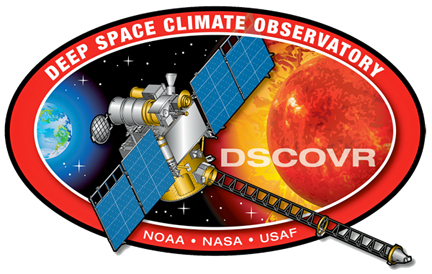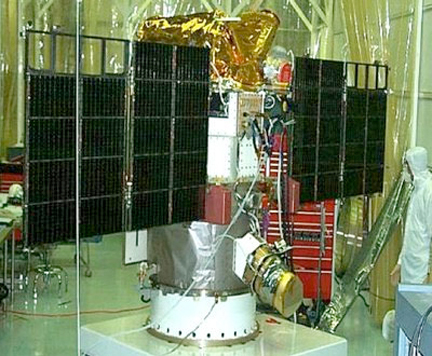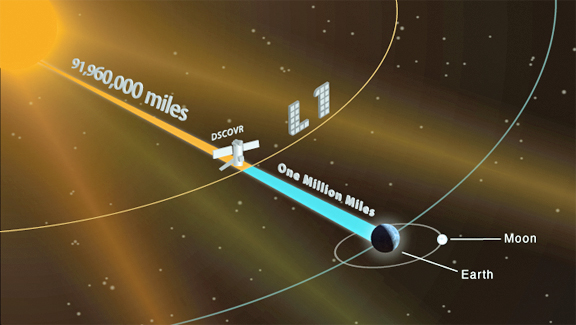
[SatNews] NASA has contributed two Earth science instruments for NOAA's space weather observing satellite called the Deep Space Climate Observatory or DSCOVR, set to launch this month.

Photo of NOAA's DSCOVR satellite, courtesy of NASA.
One of the instruments called EPIC, or Earth Polychromatic Imaging Camera, will image the Earth in one picture, something that hasn't been done before from a satellite. EPIC will also provide valuable atmospheric data.
Currently, to get an entire Earth view, scientists have to piece together images from satellites in orbit. With the launch of the National Oceanic and Atmospheric Administration's (NOAA) DSCOVR and the EPIC instrument, scientists will get pictures of the entire sunlit side of Earth. To get that view, EPIC will orbit the first sun-Earth Lagrange point (L1), 1 million miles from Earth. At this location, four times further than the orbit of the Moon, the gravitational pull of the sun and Earth cancel out providing a stable orbit for DSCOVR. Most other Earth-observing satellites circle the planet within 22,300 miles.
"Unlike personal cameras, EPIC will take images in 10 very narrow wavelength ranges," said Adam Szabo, DSCOVR project scientist at NASA's Goddard Space Flight Center, Greenbelt, Maryland. "Combining these different wavelength images allows the determination of physical quantities like ozone, aerosols, dust and volcanic ash, cloud height, or vegetation cover. These results will be distributed as different publicly available data products allowing their combination with results from other missions."

The L1 orbit diagram for DSCOVR.
Image courtesy of NOAA.
These data products are of interest to climate science, as well as hydrology, biogeochemistry, and ecology. Data will also provide insight into Earth's energy balance.
EPIC was built by Lockheed Martin's Advanced Technology Center, in Palo Alto, California. It is a 30 centimeter (11.8 inch) telescope that measures in the ultraviolet, and visible areas of the spectrum. EPIC images will have a resolution of between 25 and 35 kilometers (15.5 to 21.7 miles).
The NOAA DSCOVR mission information page is available at http://www.nesdis.noaa.gov/DSCOVR/mission.html

